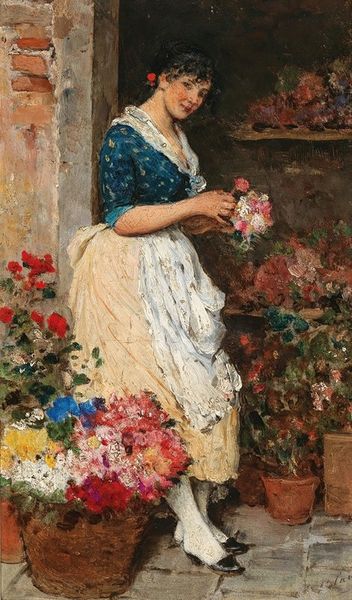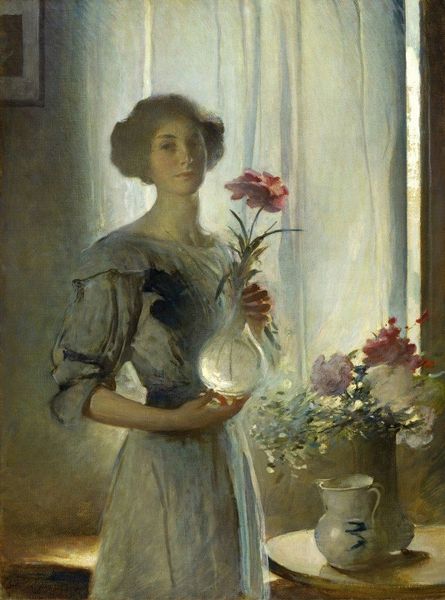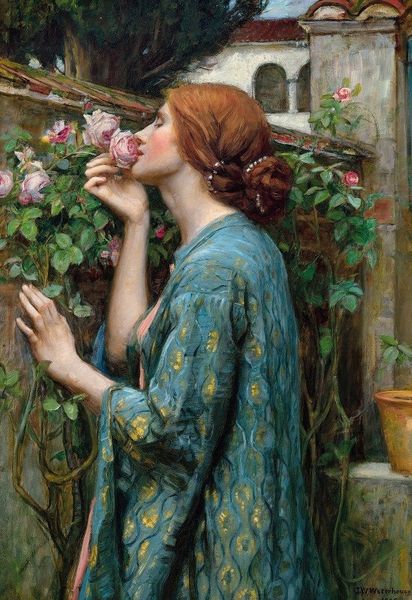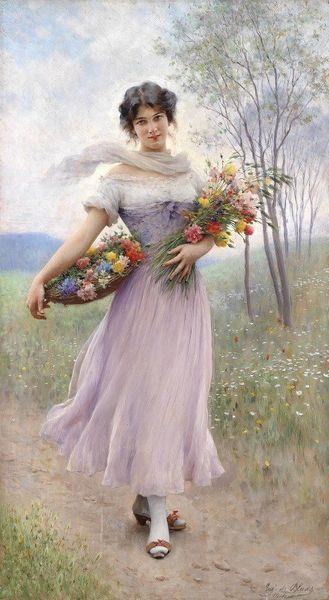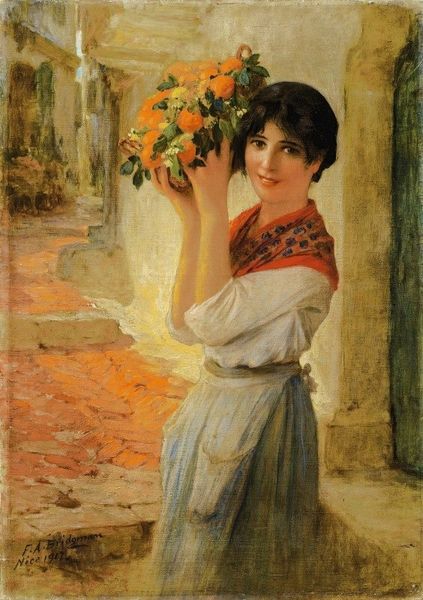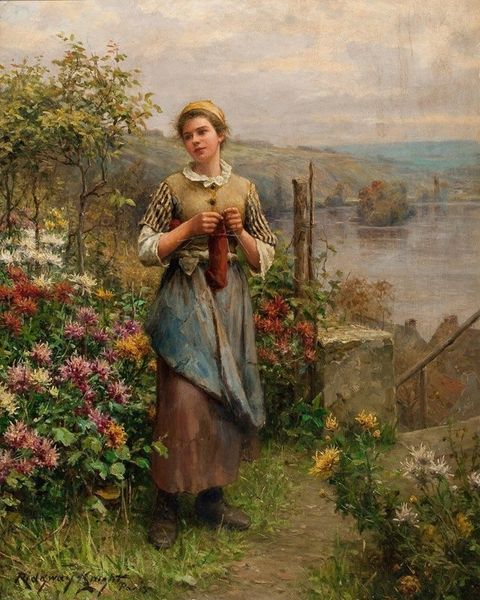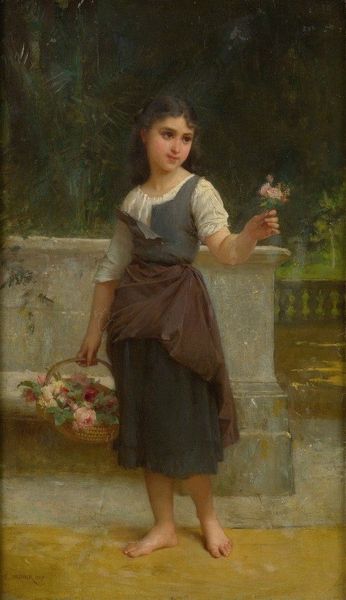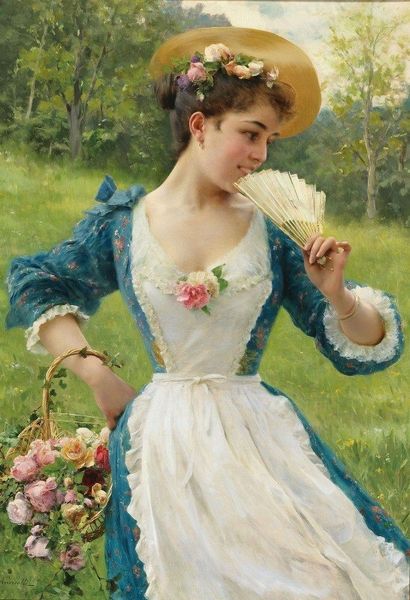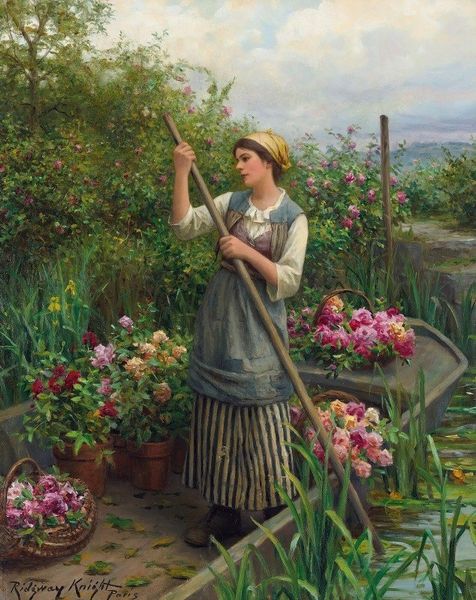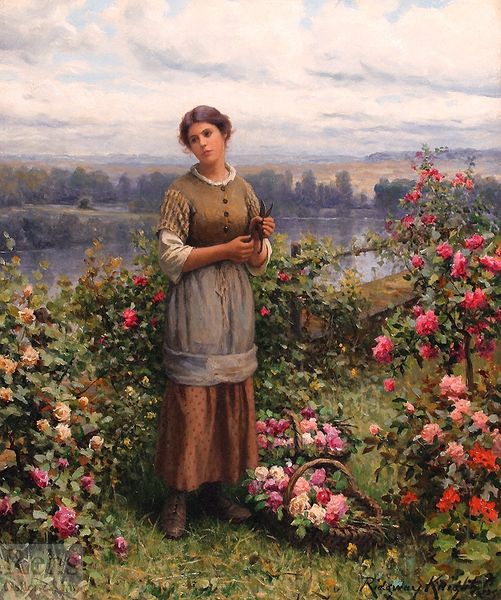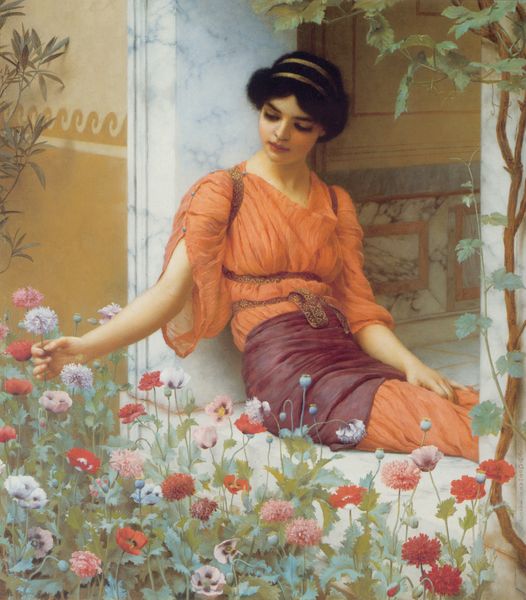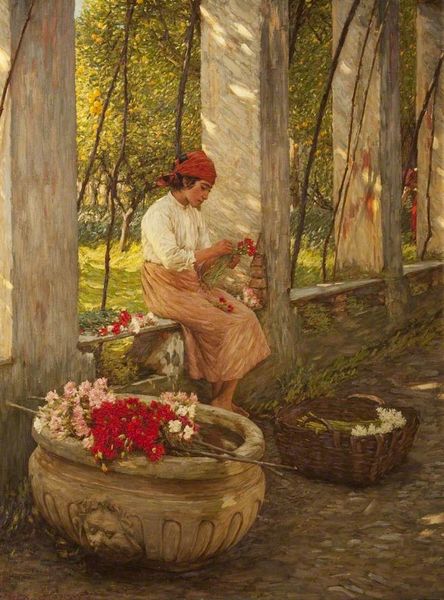
oil-paint
#
portrait
#
gouache
#
figurative
#
impressionism
#
oil-paint
#
landscape
#
figuration
#
oil painting
#
genre-painting
Copyright: Public Domain: Artvee
Editor: So, this is "The Fairest Rose" by Eugen von Blaas, painted in 1887. It looks like an oil painting, depicting a woman arranging flowers. There's a real softness to the image, almost romantic. What strikes you when you look at this piece? Curator: I notice first the construction of the scene, not just the picturesque subject. Think about where Blaas obtained his pigments. Did he grind them himself, or purchase them pre-mixed? How did that division of labor shape his process? Furthermore, how does the depiction of labor within the painting, the young woman arranging flowers, relate to Blaas’s own labor as a painter? Editor: That's interesting; I hadn’t considered the artist's labour in relation to the image of work. How does considering materials change the reading of the painting? Curator: Well, for starters, it pushes us to think beyond surface appearances. What does it mean to represent labor, beauty, and value in the same frame? Consider the social context. Who were the flowers for? What was the function of displaying a woman performing such tasks? These details offer an entry point into exploring 19th-century notions of beauty, class, and the commodification of women’s work. And how the availability of materials influenced the proliferation of genre paintings at this time. Editor: So you’re saying that looking at the oil paint itself and its production, the work *within* the painting, leads to a bigger picture of societal values? Curator: Precisely. This wasn't just about pretty colours. How labor and the material context of its depiction influence art. Editor: That gives me a lot to think about. I was caught up in the visual, but the materials and work behind it all reveal much more! Curator: Exactly, that consideration can take us further to what creates a painting's significance.
Comments
No comments
Be the first to comment and join the conversation on the ultimate creative platform.
